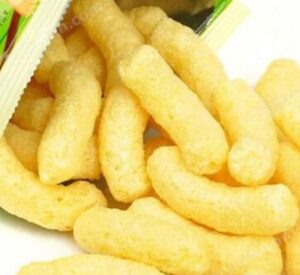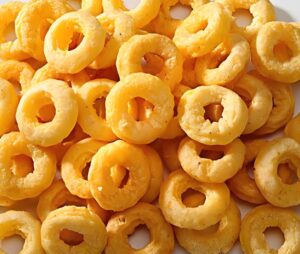Double screw extruder puffed snack food machine
ToggleHow to Safely Operate an Extruder (Puffing Machine)
Introduction
Extruders (puffing machines) are widely used in food, feed, and industrial production to create expanded products. However, improper operation can lead to accidents, equipment damage, or poor product quality. This guide outlines essential safety practices for using extruders effectively.
1. Pre-Operation Safety Checks
Before starting the extruder, perform the following checks:
- Inspect the Machine: Ensure all components (screws, barrels, dies) are clean and properly assembled.
- Check Lubrication: Verify that all moving parts are adequately lubricated to prevent overheating.
- Electrical Safety: Ensure cables and control panels are intact, with no exposed wires.
- Emergency Stops: Test emergency stop buttons to confirm they function correctly.
- Raw Material Inspection: Remove foreign objects (metal, stones) from ingredients to avoid machine damage.
2. Safe Startup Procedures
- Wear Proper PPE: Use heat-resistant gloves, safety goggles, and closed-toe shoes.
- Gradual Heating: Preheat the barrel slowly to avoid thermal shock.
- Monitor Initial Feed: Start with a low feed rate and gradually increase to prevent blockages.
- Avoid Overloading: Do not exceed the machine’s recommended capacity.
3. During Operation: Key Safety Practices
- Temperature & Pressure Monitoring: Keep within safe operating limits to prevent explosions or burns.
- Avoid Manual Adjustments While Running: Never insert tools or hands into the extruder during operation.
- Watch for Abnormal Noises/Vibrations: Unusual sounds may indicate mechanical failure—stop the machine immediately.
- Keep the Area Clear: Ensure no flammable materials are near the extruder.
4. Shutdown & Maintenance Safety
- Cool Down Properly: Let the machine cool before disassembly to avoid burns.
- Clean Thoroughly: Remove residual material to prevent mold or bacterial growth.
- Regular Maintenance: Replace worn parts (seals, screws) to prevent breakdowns.
- Lockout/Tagout (LOTO): Disconnect power before servicing to prevent accidental startups.
5. Emergency Response
- Machine Jams: Turn off power before attempting to clear blockages.
- Fire Hazards: Keep a fire extinguisher (Class K for grease fires) nearby.
- First Aid: Treat burns immediately with cold water and seek medical help if severe.
Conclusion
Safe extruder operation requires proper training, regular maintenance, and strict adherence to safety protocols. By following these guidelines, operators can minimize risks, extend equipment lifespan, and ensure consistent product quality.
Stay Safe, Stay Efficient!
Keywords: Extruder Safety, Puffing Machine Operation, Industrial Safety, Food Processing Safety
Would you like any section expanded or modified for specific industries (e.g., food vs. feed production)?









